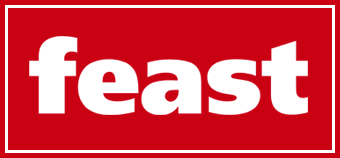With industry data showing average approval durations of 2.4 hours on weekdays, medical emergency loan processing speeds in Australia have achieved previously unheard-of efficiency levels. A major improvement in financial accessibility for Australians dealing with acute medical expenses is represented by this breakthrough.
Enhancements in Processing Speed Are Driven by Technological Progress
Australia’s lending industry has made significant technical investments, as seen by the increase in emergency loan approvals. These days, automated credit evaluation systems read applications using complex algorithms that analyse several data points at once, such as banking habits, work history, and current debts.
According to industry research, the use of artificial intelligence has decreased the need for manual reviews by about 70% when compared to conventional banking procedures. Consumers can now expect shorter approval times because lenders can verify income and expenses in minutes rather than days thanks to real-time banking connectivity.
The 2.4-hour processing benchmark incorporates multiple discrete stages: automated screening and initial application validation take place in the first half hour, thorough credit evaluation and income verification usually take 30 to 90 minutes, and final approval decisions and contract preparation take up the remaining time before funds are distributed.
Analysis of the Market: Processing Standards and Emergency Loan Options
Expert Market Research values Australia’s personal loan market at AUD 1.66 billion in 2024. The market is expected to develop at a compound annual growth rate of 23% through 2034. Due to increased competition among lenders as a result of this expansion, processing efficiency and service delivery have improved.
Emergency Loans with Fast Approval Products
These days, lenders provide emergency loans with amounts between $500 and $30,000 and processing durations between 30 minutes and 24 hours. Depending on loan security arrangements and the results of credit assessments, interest rates range from 6.28% to 24%+ APR.
No Interest Loans Scheme (NILS) Alternative
Up to $3,000 is available for necessities, such as medical bills, under government-sponsored NILS programs, which process applications through networks of community organisations in 1-2 weeks. These loans, which target low-income households with gross yearly wages below $70,000 for individuals or $100,000 for couples with dependents, have no interest or fees attached.
Conventional Banking: Medical Finance
Well-known financial institutions still provide medical loan products up to $100,000, however processing times can take one to five working days. For creditworthy clients, major lenders like Great Southern Bank have launched specialised medical financing solutions with attractive rate structures.
In order to meet the increasing need for emergency loan solutions with quick access, a number of online platforms, such as MeLoan, have appeared. These platforms use technology-driven evaluation procedures to rival traditional banking timelines.
Economic Context: Interest Rate Environment and Borrowing Costs
In August 2025, the Reserve Bank of Australia decided to lower the official cash rate from 3.85% to 3.60%, which has somewhat reduced borrowing costs in the personal lending markets. However, because emergency loan products are unsecured and require accelerated approval, they usually have premium pricing.
The following rate structures, derived from credit evaluation results, are revealed by current market analysis:
- Prime Credit Applicants: 6.28% to 12% APR
- Standard Credit Profiles: 12% to 18% APR
- Sub-Prime Borrowers: 18% to 24%+ APR
The cost implications for a typical $5,000 emergency loan over 24 months show notable differences: at 12% APR, monthly repayments amount to $235 with $640 in total interest costs; at 18% APR, monthly obligations rise to $254 with $1,096 in total interest; and at 24% APR, monthly payments amount to $273 with $1,552 in interest charges.
Coverage Area: Types of Medical Expenses and Applications for Funding
Generally speaking, emergency loan solutions cover a wide range of medical price categories that go beyond urgent hospital bills. Emergency surgery, non-Medicare specialist consultations, orthodontic and dental care, mental health support services, medical equipment and mobility aids, and recovery-related costs such as home care arrangements are some examples of eligible charges.
Approximately 95,000 Australians, according to industry data, used medical loans in the previous year. For the majority of medical emergencies, the typical loan amount was between $2,000 and $15,000.
Framework for Government Assistance: Other Funding Options
Australia still has a number of government-sponsored financial aid programs to help its inhabitants in times of medical need, albeit some of these are no longer available due to recent legislative changes.
Crisis Payment Qualifications
As of July 2025, Services Australia reports no qualifying health emergencies for Crisis Payment claims. This policy change has led to a greater reliance on emergency loan products and other alternative funding sources.
Parts of the Medicare Safety Net
In order to partially offset continuing medical expenses, the Medicare Safety Net offers further rebates if yearly threshold amounts are achieved. But this approach only works in retrospect and offers little help with urgent financial needs.
Access to the No Interest Loans Programme
Operating via more than 170 community organisations in more than 600 sites nationwide, NILS providers give up to $3,000 in medical expense coverage without requiring a credit score. Because these programs usually take 1-2 weeks to process, they are appropriate for non-urgent medical finance requirements.
Application Strategy: Optimising Approval Outcomes
Effective emergency loan applications necessitate careful planning and documentation control. An examination of the industry shows a number of variables that have a major influence on processing times and approval chances.
Required Documentation Essentials
- thorough identity confirmation (at least 100 points)
- Current proof of income (such as Centrelink statements or paystubs)
- Current banking records (three months are advised)
- Quotes for medical services or invoicing
- Details of the current debt obligations
Timing Optimisation Factors
Generally speaking, applications filed Monday through Thursday are processed more quickly; submissions made before 2:00 pm are more likely to be approved the same day. Limitations in banking systems usually cause delays for weekend applications; however, certain lenders have been able to perform transfers outside of regular business hours thanks to connectivity with the New Payments Platform.
In order to reduce the amount of documents needed while upholding standards for responsible lending compliance, companies such as MeLoan have created simplified application procedures.
Risk Assessment: Considerations for Responsible Borrowing
Comprehensive affordability assessments are crucial before considering emergency loan arrangements, according to financial counselors. Inquiries about managing medical debt have increased, according to the National Debt Helpline, underscoring the importance of prudent financial planning amid medical emergencies.
Assessment of Alternative Options
Frequently, medical providers provide interest-free payment plan alternatives that could end up being more affordable than emergency loan items. There are instances when gap payments can be made in advance through private health insurance, and charitable organisations offer certain medical aid programs to qualified candidates.
Cautionary Signs
Financial experts point to a number of warning indicators that point to inappropriate borrowing conditions, including borrowing for optional, non-essential operations, having trouble paying off debt, not having a clear payback capability, and making emotional decisions without doing enough study or comparison.
Market Outlook: Future Developments in Emergency Finance
The industry anticipates that emergency loan processing will continue to progress technologically, with artificial intelligence capabilities lowering approval times even more while upholding responsible lending standards. Direct financing choices at the point of service could be made available by medical providers through embedded finance integration, which could simplify the entire process for patients.
The landscape of emergency loans is still being shaped by regulatory trends, which include a greater emphasis on consumer protection measures and requirements for clear fee disclosures across all lending channels.
Conclusion: Using a Strategic Approach to Finance Medical Emergencies
The development of emergency loan processing in Australia has given its inhabitants more options when they encounter unforeseen medical expenses. The 2.4-hour processing guideline is a major step forward for financial accessibility, but before agreeing to any loan, applicants should carefully consider all of their options.
Getting the right emergency funding for medical emergencies still requires careful planning, precise timing, and a careful evaluation of all available possibilities. Commercial emergency loan products should be evaluated in conjunction with government assistance programs, charitable aid, and medical provider payment plans in order to guarantee the best possible financial results.



